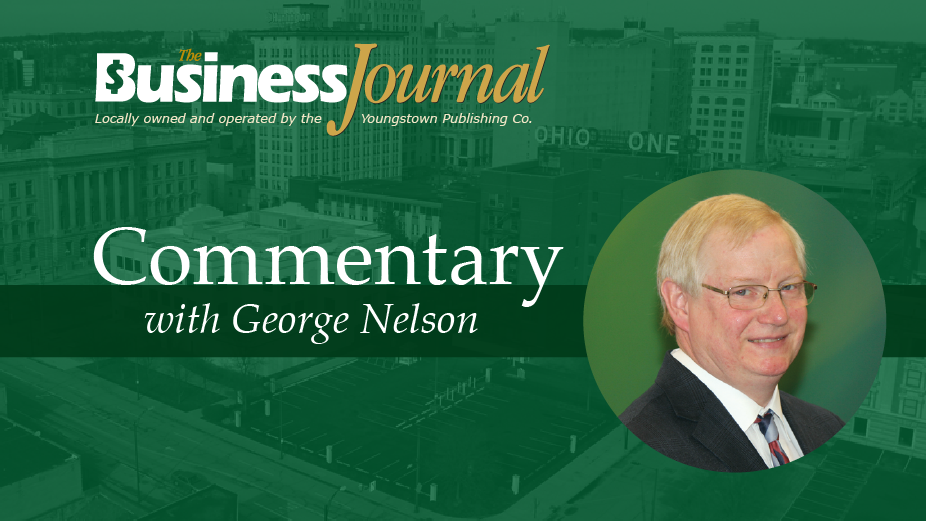“So, I’m divorced again until November?” – Ada Nelson, a few weeks ago and every year there’s a presidential election.
My wife overstates. She might still be smarting from the fact that in 2008 I spent Valentine’s Day covering Hillary Clinton’s visit to Lordstown and then her birthday at Michele Obama’s campaign stop in Warren.
Like virtually every aspect of life, the coronavirus has changed covering the 2020 presidential election. A lot.
Along with the memos, lunch menus and thank-you notes tacked to my office bulletin board is a set of lanyards hanging from a few thumbtacks. Attached to them are press passes from past presidential campaigns.
There haven’t been many opportunities to add to that collection this year. For many local reporters, Democratic presidential nominee Joe Biden’s stop in Alliance following the Sept. 29 presidential debate represented the first actual campaign event this fall.
Even that stop, at a train station, was limited to a group of reporters who were socially distanced. At press time, there is no indication that President Trump or Joe Biden will touch down here before Nov. 3, although it can’t be ruled out.
Normally, the candidates and their major and minor surrogates would have filled this presidential election season with visits. At press time, Donald Trump Jr. is scheduled to visit Youngstown.
Just before the March 2016 primary, I was riding in a bus packed with reporters from all over the country to watch Hillary Clinton hoist a beer with U.S. Rep. Tim Ryan at O’Donold’s in downtown Youngstown.
This year, I spent the night before Ohio’s March 17 primary trying to keep track of whether the primary would be held the next day. It wasn’t.
Obviously, this is an election like no other, with the coronavirus pandemic largely precluding the kinds of large rallies and other events we’ve become accustomed to covering.
Four years ago, both Trump and Clinton held rallies locally before the primary, and Trump returned to the Valley for a Labor Day visit to the Canfield Fair.
That year, surrogate visits scheduled by the Clinton campaign included Biden, former President Bill Clinton, Chelsea Clinton, actress Sally Field and several cast members from “The West Wing.”
That doesn’t mean there’s been no activity. But it’s definitely taken a different form. Vice President Mike Pence’s trip to the Lordstown Motors Corp. plant for the unveiling of the Endurance certainly has to be viewed within the context of the campaign. So do recent visits to Youngstown by HUD Secretary Ben Carson and Environmental Protection Agency Administrator Andrew Wheeler.
Much of my focus this presidential campaign year is on voting – how it’s different in the pandemic, record early voting numbers and activities at state and county elections boards.
We’ve also been covering delays in absentee ballots reaching voters, notably those printed and mailed by a Cleveland company that, until it was called out, flew a Trump flag outside its headquarters. And we’ve reported on slow ballot delivery issues resulting from management directives at the U.S. Postal Service.
One of the surprises I encountered this year came on the first day of early voting. Given the results four years ago, when historically Democratic Trumbull County went to Donald Trump and he came close to winning in similarly blue-leaning Mahoning County, I fully expected there to be a mix of Trump and Biden supporters, even though Trump had been encouraging his voters to cast their ballots Nov. 3 rather than voting early.
Nope. None of the voters I talked to – including some whose demographics would have indicated they may be Trump supporters – said they were voting to reelect the president.
I’ve also been working with journalists across the state as part of the Your Voice Ohio project, an effort to get past the noise and to learn the concerns Ohio voters share. The goal is to provide the information voters need to make informed decisions.
Hopefully this has been informative to readers. But it’s clear from some of the feedback to those stories as well as to our coverage in general that the reception isn’t universally positive. Sometimes the responses are heated.
With any luck, we’ll know Nov. 4 who won the election. If we don’t, that means the process is taking longer because of this year’s heavy reliance on mail-in ballots to certify the results and potential challenges.
So sit tight. It’s been a wild ride. But we’ll get to the end.
